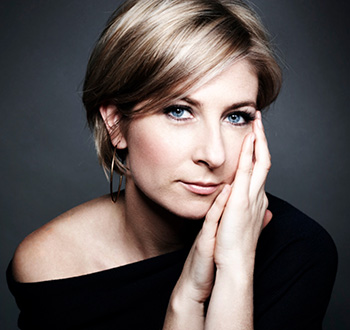by Timothy Robson

All except one of the works is a standard of the orchestral repertoire. The opener, the Fantasia in f, K. 608 for mechanical clock organ, was composed less than a year before Mozart’s death in 1791 for a player mechanism with organ pipes similar to a music box or player piano. That mechanism allowed Mozart to compose a piece that would be physically impossible to play with human fingers.
The Fantasia is most often performed in arrangements for the organ, with some editorial compromises to make it playable with two hands and two feet. Here it was played in an imaginative and intriguing orchestration by Harry Bicket for strings, flute, oboe, bassoon, and two horns, which cast a completely different light on the piece. The numerous solo passages were parceled out to the wind instruments and solo violin. The Fantasia is in three parts, with the third section repeating and expanding the sharply rhythmic opening music. The middle section is a slow, lyrical andante. The transition to the recapitulation was cast as a violin cadenza, played by concertmaster Peter Otto.
Mozart’s “motet for soprano, organ and orchestra” Exsultate, jubilate is often described (and performed) as a sacred work, even though it never mentions God, with the exception of a short prayer to the Virgin as the third movement. In the spirit of the Enlightenment, there is general rejoicing about the “friendly day,” clouds and storms that have left, and “garlands and lilies.”
Its three movements and recitative are a virtuoso cantata for solo voice. American soprano Kiera Duffy was an excellent soloist, with her pure, light, lyric voice, but sometimes with enough of an edge to cut through the orchestral texture. Only occasionally in the lower part of her range was her singing covered by the orchestra. Duffy’s coloratura was cleanly delivered, and she interposed two solo cadenzas. The slow movement was especially fine, with soft, floated high notes. At the end, she took the optional high C at the closing cadence.

The real high point of this concert, best demonstrating Mozart’s genius, came last: the Symphony No. 38 in D, “Prague,” finished in December 1786. First performed in that Czech city in 1787, the symphony predicts the orchestral gravity of Don Giovanni, which followed soon after, especially in the solemn minor-key introduction to the first movement. The playing here was lithe and athletic, with plenty of controlled energy. The second movement contrasts chromatic melodies with purely diatonic passages, while the finale — Mozart didn’t compose a minuet/trio — balances fleet, delicate passages with loud punctuations.
The Orchestra was precise in quick passagework, and as earlier in the concert, the phrasing was beautifully managed, tapering off at the ends of phrases, with nothing ever ragged or out of place.
Published on ClevelandClassical.com February 19, 2019.
Click here for a printable copy of this article



